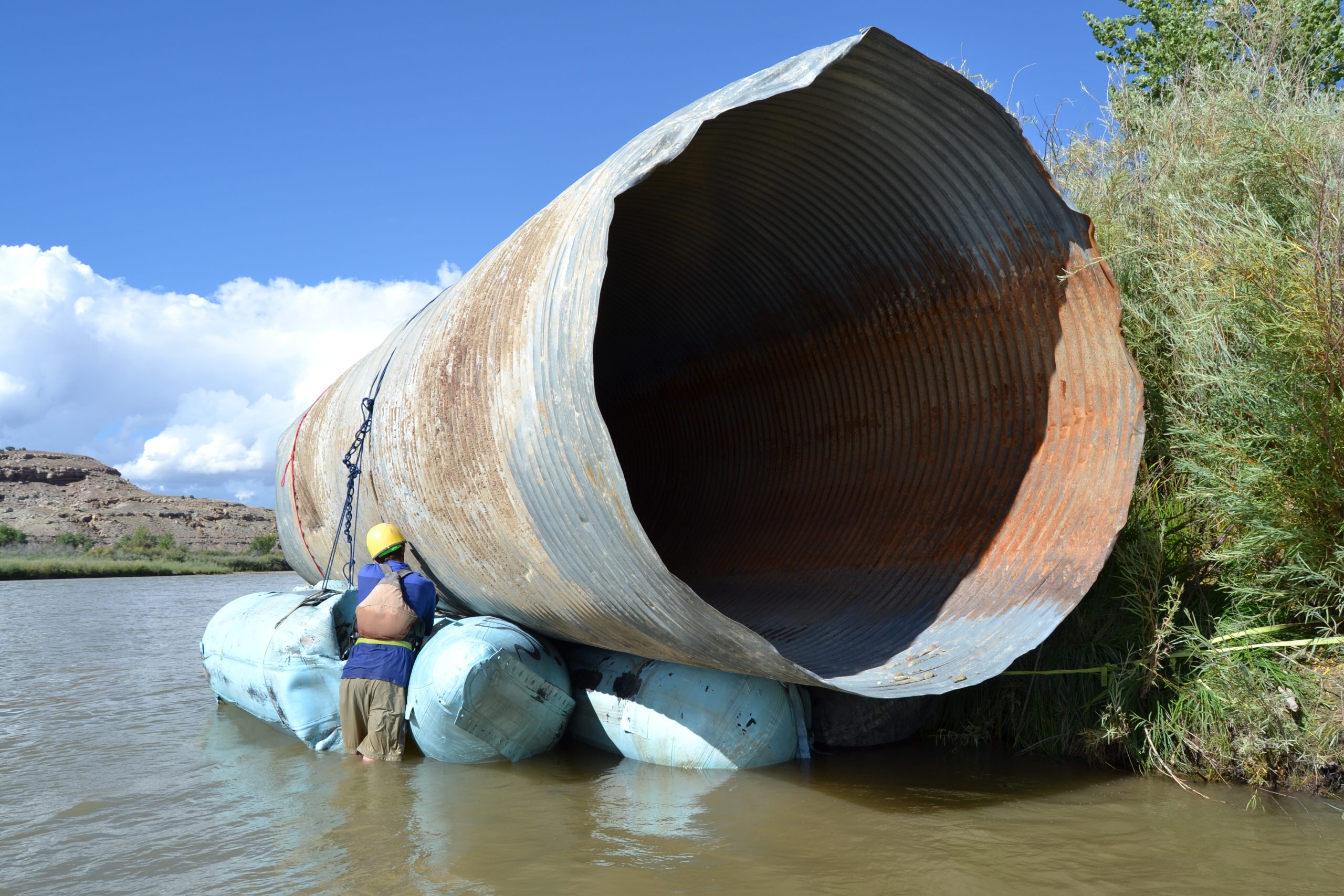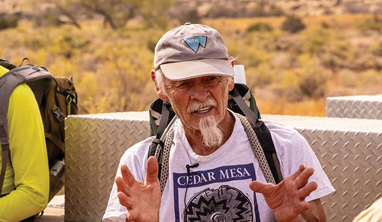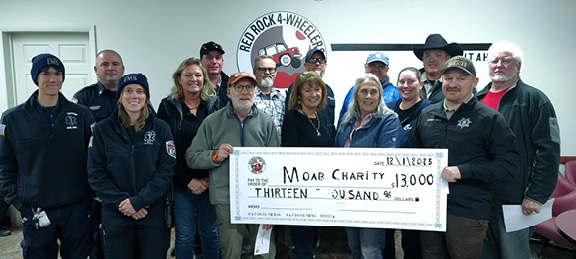Some information may be outdated.
Thanks to three Moab river-rafting companies, a massive steel culvert was recently dragged out of the Colorado River, and no one appears to know from where it came or to whom it belongs.
“By far, it’s the largest piece of river booty, or debris,” ever recovered from this portion of the river, said Jennifer Jones, Bureau of Land Management recreation planner at the Moab Field Office. “There’s never been anything of this magnitude.”
The culvert appeared Wednesday, Sept. 3, approximately 70 miles northeast of Moab along the east bank of the river near the Westwater Ranger Station.
“Nobody’s come looking for it,” Jones said. “It’s odd for such a large piece to not be visibly missing. It’s an unsolved mystery at this point.”
Scott Solle, operations manager of Canyon Voyages Adventure Co., was guiding a whitewater trip through Westwater Canyon, on Sunday, Sept. 14, when he noticed the huge culvert in the river approximately four miles from the Utah-Colorado state border.
A few days later he called his competitors – other Moab river companies who conduct day trips through Westwater Canyon – to enlist their help in removing the culvert from the river. Jose Tejada, of Sheri Griffith Expeditions, loaned the company’s rubber J-tubes, and Brian Martinez, of Navtec, offered the use of his sport boat.
On Monday, Sept. 22, in what became a 12-hour operation, a team consisting of Solle, Martinez, Sheri Griffith Expedition guides Tabitha Chlubicki, Aaron Rotchadl and Bo Christensen; Mitch Flanigan and Tory Davis of NAVTEC Expeditions; and Arne Hultquist of Canyon Voyages, set out to prevent the culvert from washing downstream.
“Our companies, we all run that stretch of the river on one-day trips,” Solle said. “It’s a narrow gorge. It cuts through some old, unique rock.” It’s one of the few places where we can run a one-day whitewater trip.”
Martinez began bumping the culvert with the nose of his sport boat, rocking it back and forth, allowing the team to slowly ease a rope underneath and toward its middle. The rope was then thrown across the top and attached to pulleys and slowly pulled and rolled uphill about three feet. Meanwhile the retrieval team had lashed together the J-tubes to construct a makeshift raft which was pushed underneath and secured to the culvert.
“It was a lot larger than we had envisioned,” said Solle, who estimated the culvert to be at least 10 feet wide and 30-35 feet long. “It was very complicated. We’re all trained in river rescue that includes rope work.”
Solle said the culvert was most likely pushed into the river during a violent flash flood from a side stream. He initiated the recovery, he said, because he wanted it removed as quickly as possible for safety reasons.
“If it had gone downstream it would have been more serious. If it had gone into Westwater Canyon it would have been dangerous,” Solle said. “We would not be able to run our business in the canyon.”
“We don’t know where it came from,” Jones said.
She speculated the culvert belonged to the Grand County Road Department, or the Union Pacific Railroad, but neither reported a missing culvert.
Matt Johnson, of Union Pacific, in Grand Junction, Colo., said it doesn’t belong to the railroad. Nor has Grand County noticed a missing culvert, but they were interested in “taking it off our hands,” Jones said.
Grand County road department agreed to help remove the culvert after the BLM asked for assistance, said road supervisor Bill Jackson. Hopefully, its owner will come get it; if not, the county will “figure out a place to put it,” he said.
On Monday, members of the county road department, with help from Solle and six other Moab residents met at the Westwater Ranger Station boat launch to finish the job of removing the culvert from the Colorado River. For now, it’s secured offshore near the Westwater Ranger Station.
The BLM is “grateful that the river companies took ownership in the canyon and rose to the incredible challenge of wrangling” the massive object out of the river, Jones said.
“It is wonderful to work with amazing partners that exemplify true land stewardship,” she said.
River runners are known for performing periodic river clean-ups – although it’s typically trash and tires that are hauled out.
“We did this as a service, as stewards of this beautiful river section,” Solle said.
Each of the companies incurred expenses, including ruined equipment, as well as time and fuel spent getting there, Solle said. If they knew the culvert’s owner they’d like to be reimbursed, he said.
Several Moab rafting companies team up for effort
Our companies, we all run that stretch of the river on one-day trips. It’s a narrow gorge. It cuts through some old, unique rock. It’s one of the few places where we can run a one-day whitewater trip.
Appreciate the coverage? Help keep local news alive.
Chip in to support the Moab Sun News.





